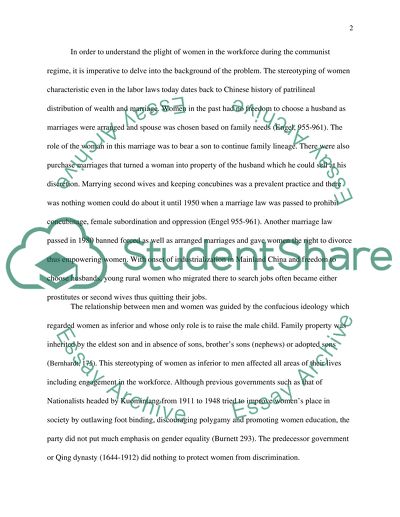Cite this document
(“Chinese Women under the Communist Regime(1949-Now) Research Paper”, n.d.)
Retrieved from https://studentshare.org/history/1690668-chinese-women-under-the-communist-regime1949-now
Retrieved from https://studentshare.org/history/1690668-chinese-women-under-the-communist-regime1949-now
(Chinese Women under the Communist Regime(1949-Now) Research Paper)
https://studentshare.org/history/1690668-chinese-women-under-the-communist-regime1949-now.
https://studentshare.org/history/1690668-chinese-women-under-the-communist-regime1949-now.
“Chinese Women under the Communist Regime(1949-Now) Research Paper”, n.d. https://studentshare.org/history/1690668-chinese-women-under-the-communist-regime1949-now.


